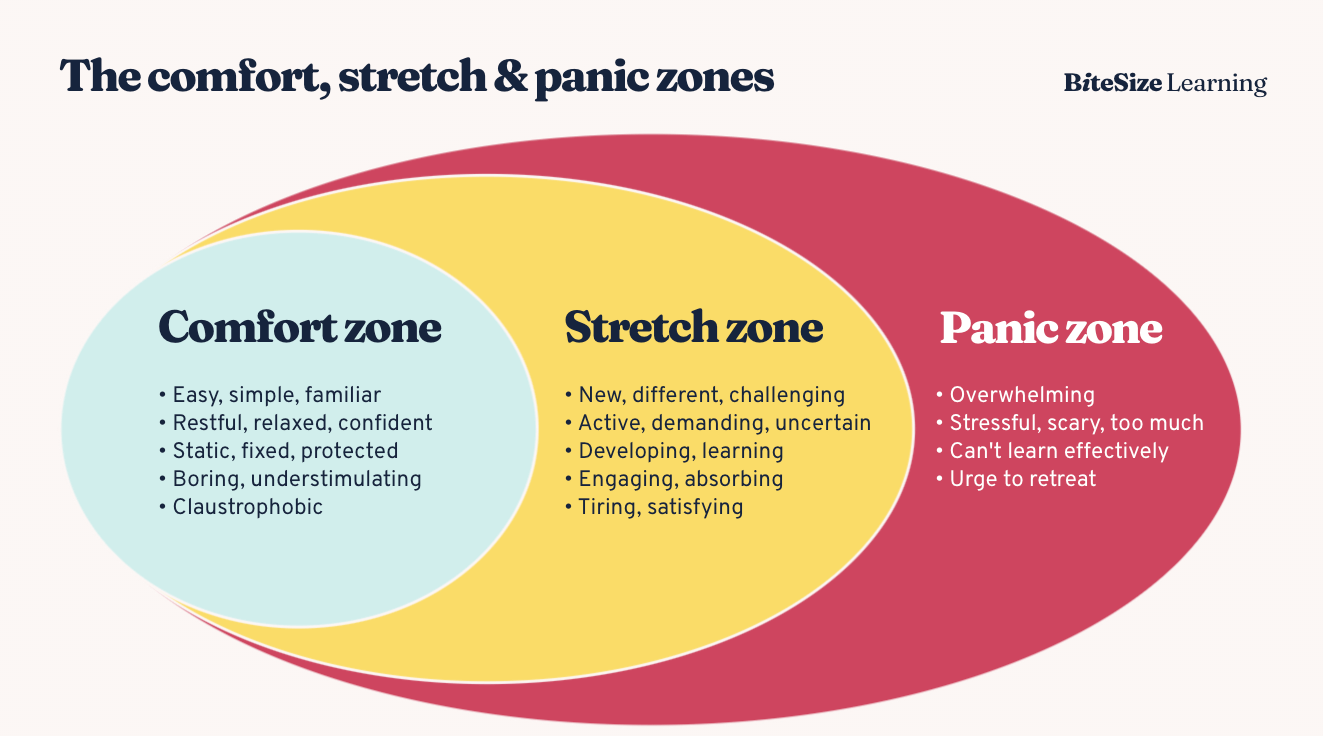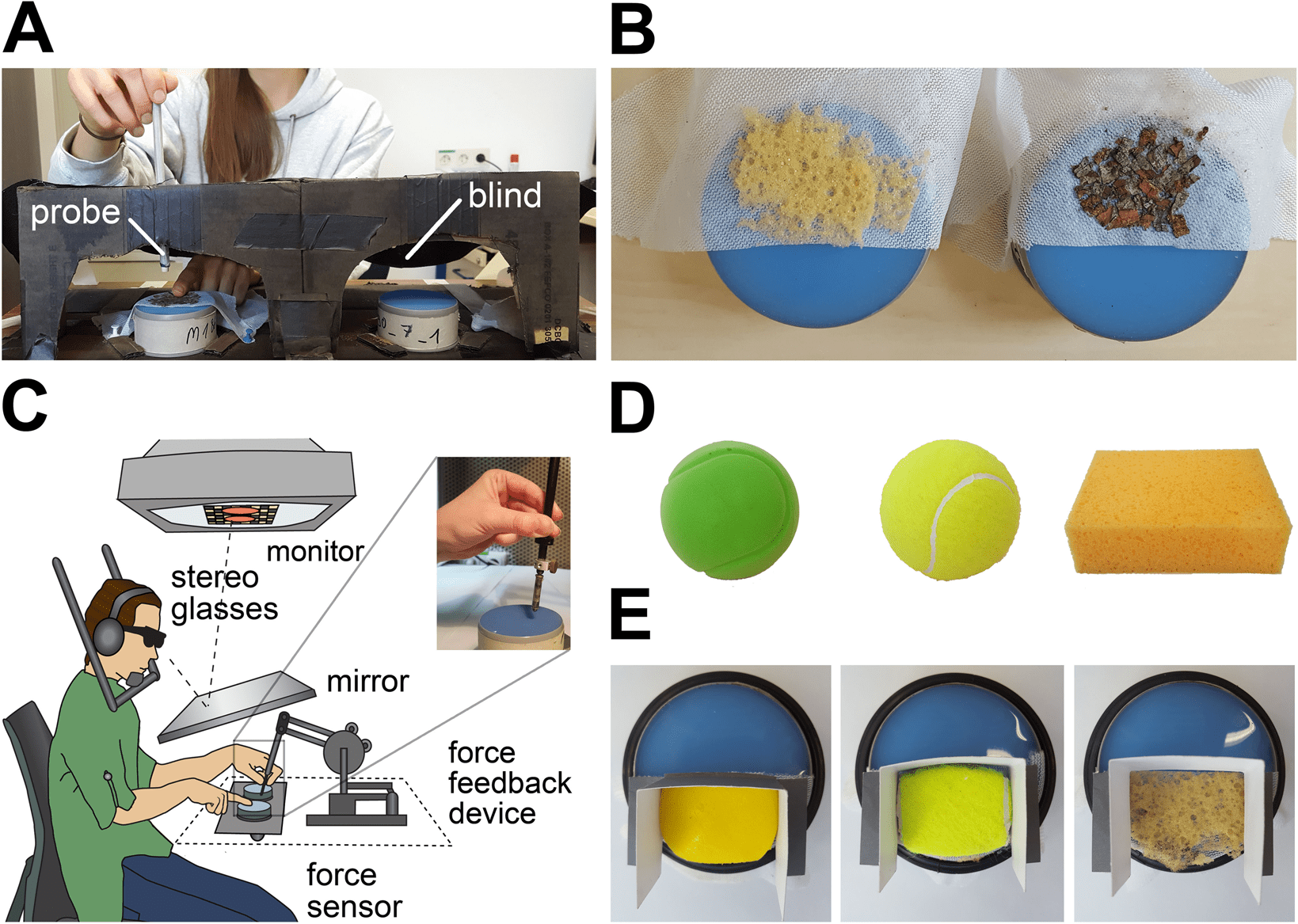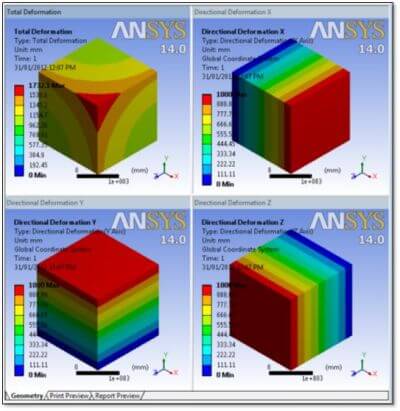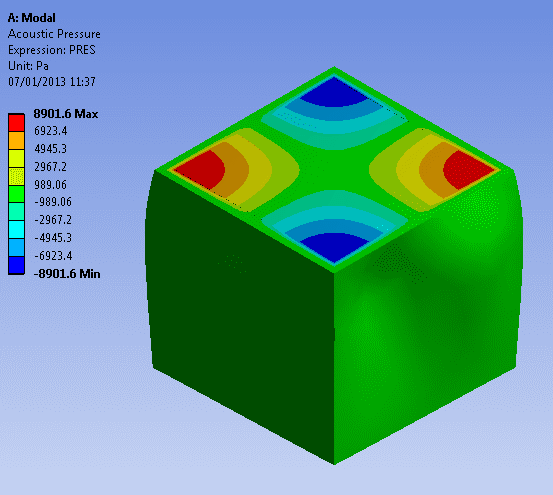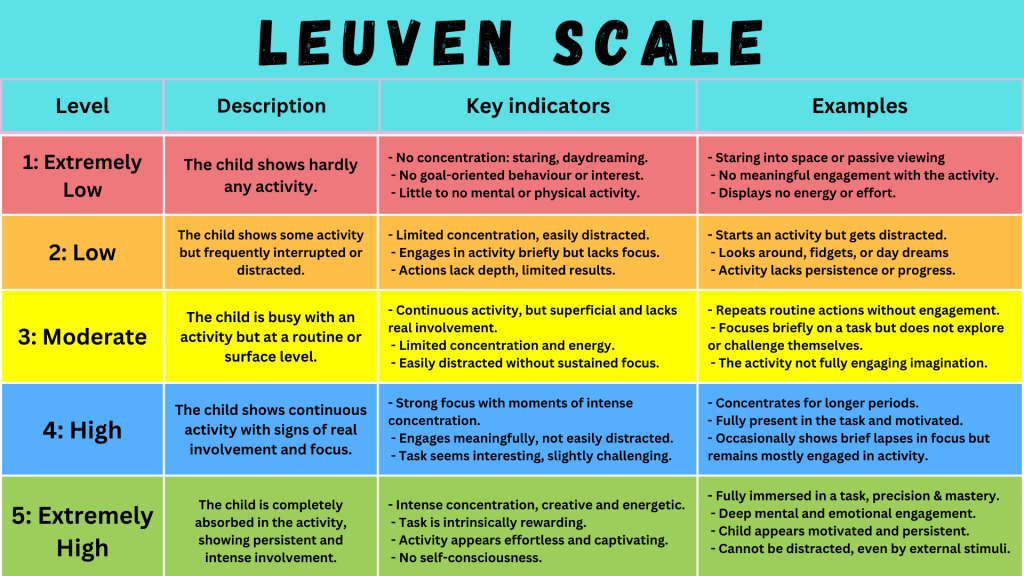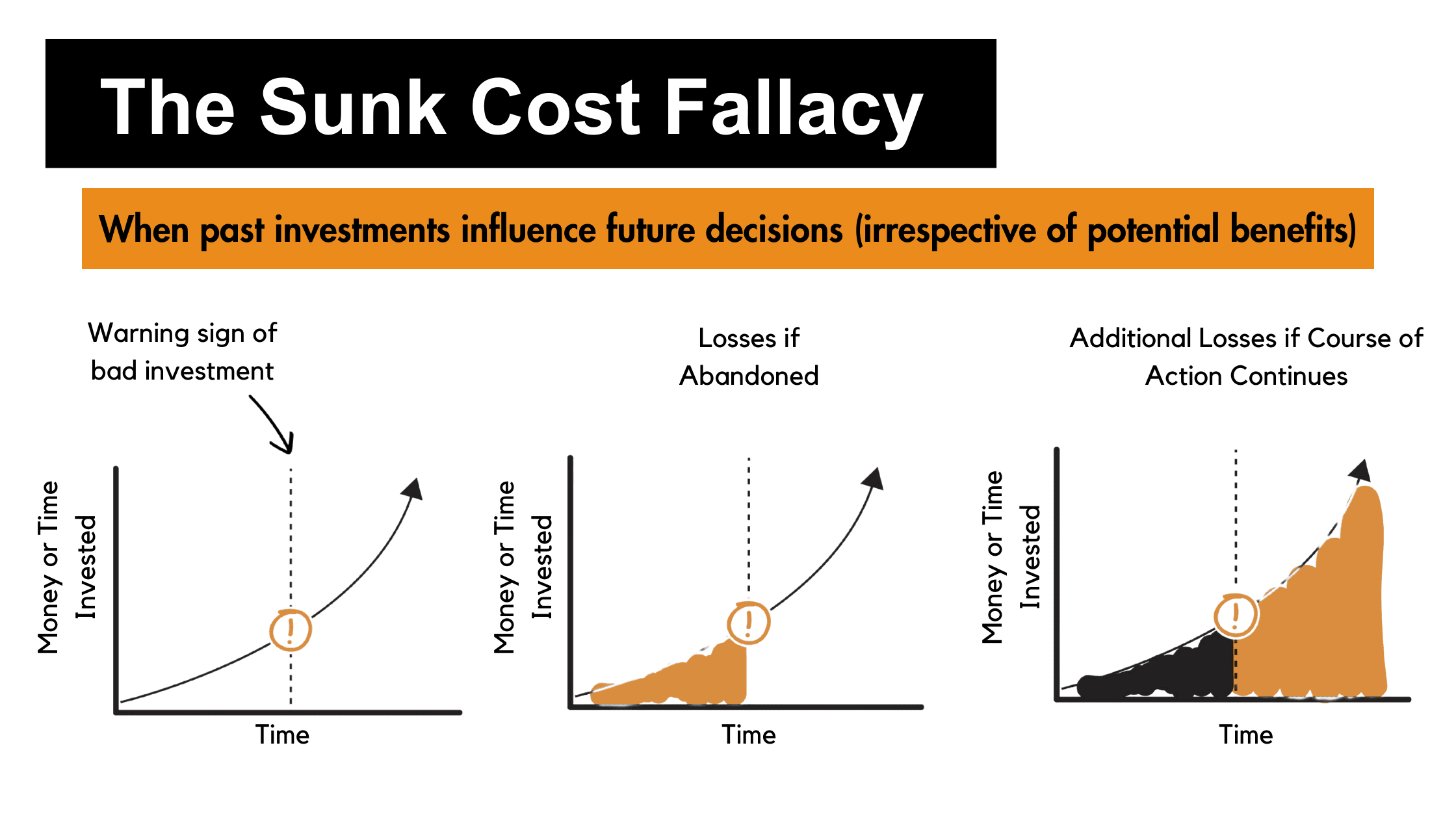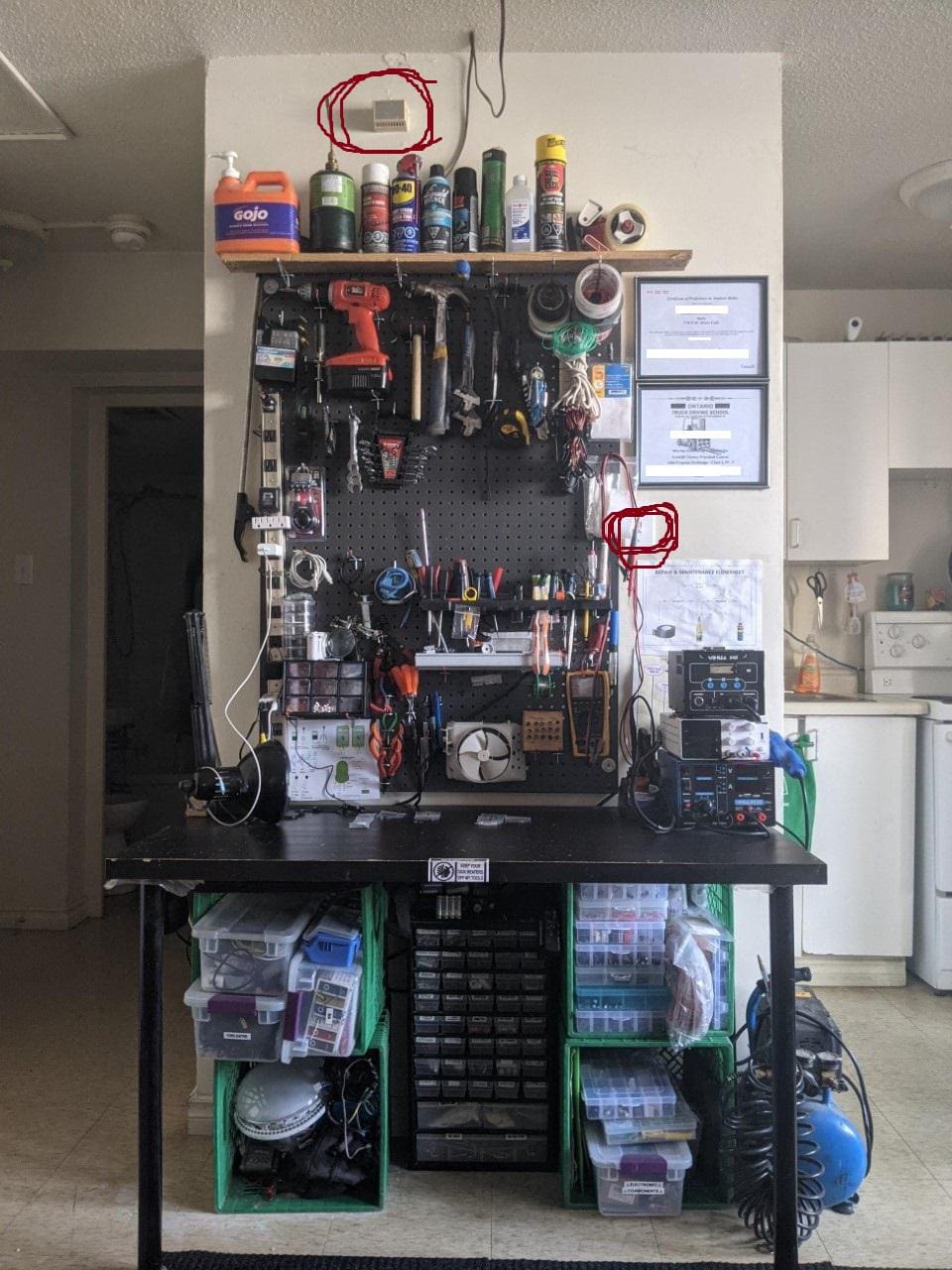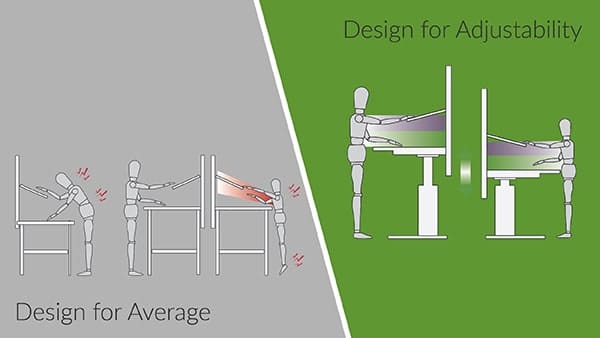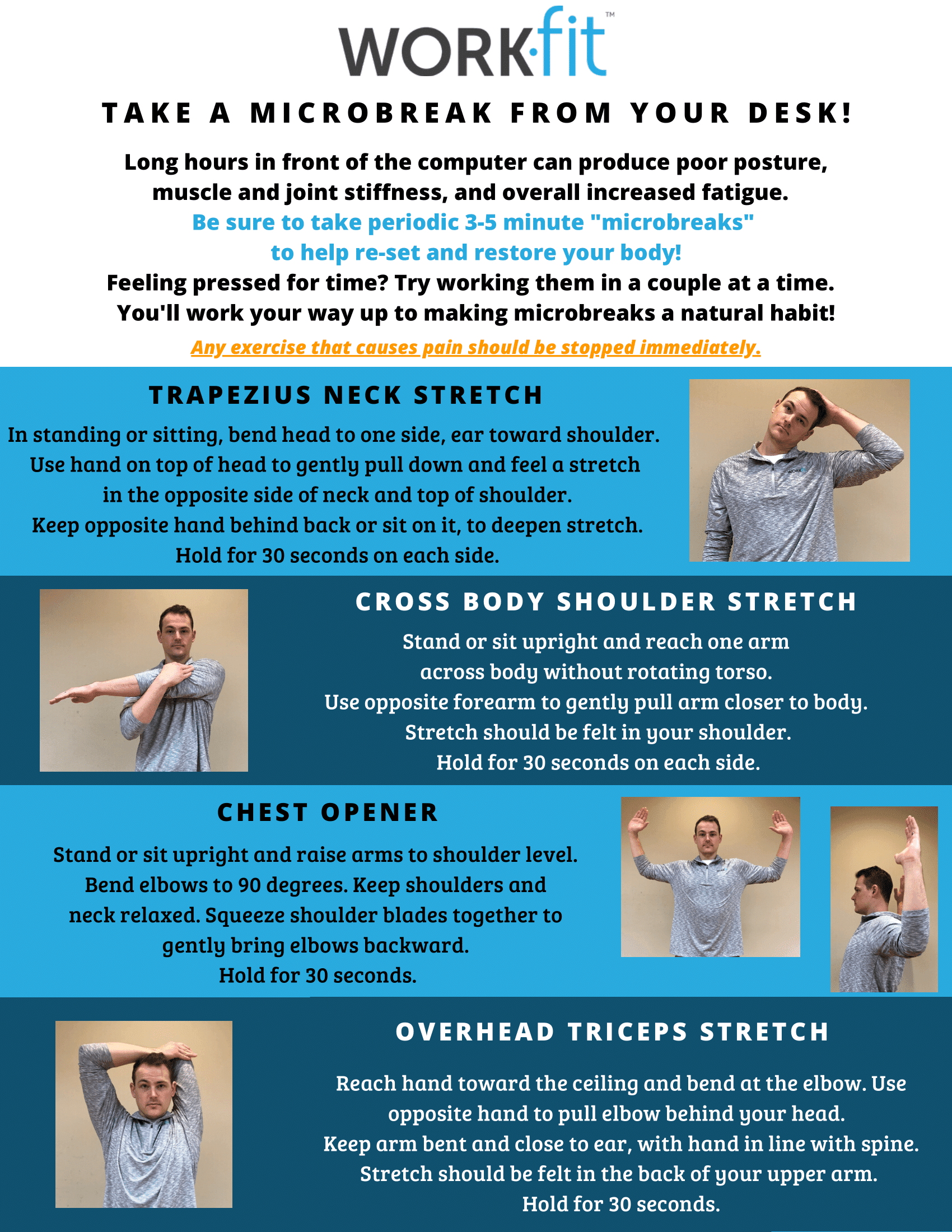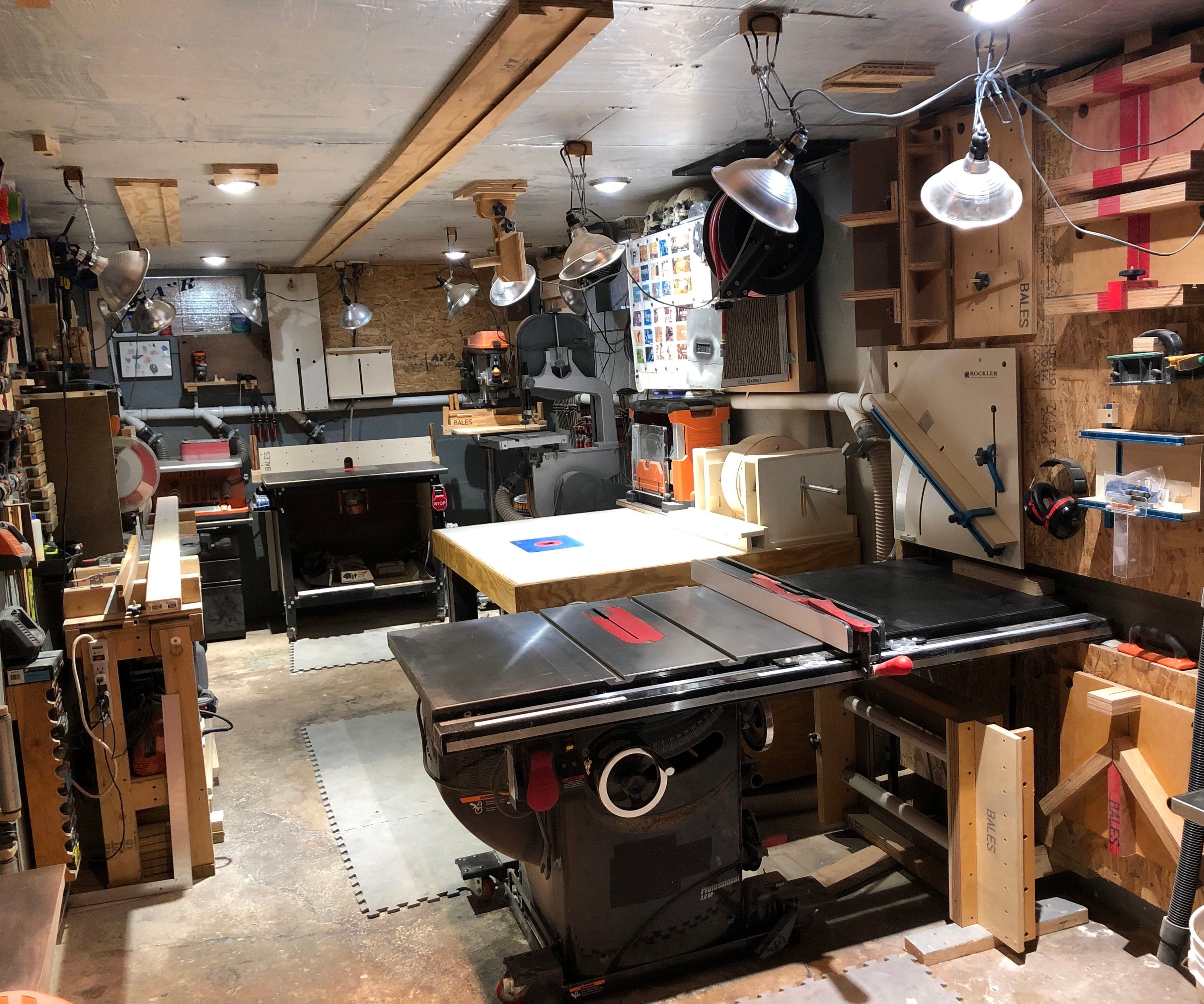DIY Workbench Psychology: The Hidden Mental Triggers That Make or Break Your Workshop Success
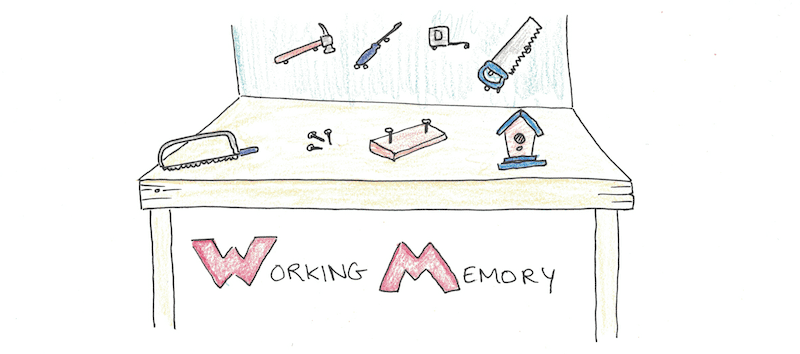
Table of Contents
-
The Neurological Architecture of Workshop Design
-
Cognitive Load Distribution in Physical Space
-
The Materials Psychology Revolution
-
The Social Ecology of Workshop Spaces
-
The Economic Shadow Dynamics of Workshop Investment
-
The Biomechanical Optimization Framework
-
How Jiffy Junk Supports Your Workshop Evolution
-
Final Thoughts
TL;DR
-
Your brain processes workspace differently during “maker mode” – successful workbench designs align with these cognitive patterns rather than fighting them
-
Material choice affects your emotional connection to projects through haptic feedback and thermal properties that influence work quality
-
Workshop spaces exist within social ecosystems – noise, visibility, and family dynamics significantly impact your building success
-
Investment psychology creates hidden behavioral patterns that determine long-term workshop utilization and satisfaction
-
Biomechanical optimization prevents injury while actually improving craftsmanship capabilities over time
The Neurological Architecture of Workshop Design
Your DIY workbench functions as a physical extension of your cognitive processes. I’ve discovered through years of workshop design that successful builders understand workspace creation involves deep neurological patterns that most people never consider.
Research shows craftspeople who design based on cognitive flow patterns complete projects 40% faster than those following standard plans. Why? Your brain processes spatial relationships differently during focused maker activities. Experienced craftsman Paul Sellers confirms this through his observation that “6,500 students worked at my benches through thirty years and no one ever said the bench was too high or too low”, demonstrating how proper cognitive-physical alignment creates universal functionality across diverse users.
Cognitive flow patterns during maker mode create specific spatial processing requirements that differ from everyday brain function. When you build a workbench, understanding these patterns becomes crucial for creating workspaces that enhance rather than hinder your natural cognitive processes.
Standard workbench plans ignore individual neurological differences, leading to suboptimal workspace efficiency and increased project completion times. When planning your DIY workbench project, understanding these cognitive patterns becomes even more crucial if you’re working within existing spaces that may need garage clean out services to create the optimal workshop environment your brain requires.
Cognitive Load Distribution in Physical Space
Your workbench layout directly impacts mental performance and project completion rates through strategic distribution of cognitive demands. The positioning of tools, materials, and work surfaces either supports or conflicts with how to build a workbench that works with your brain’s natural organization patterns.
Mental performance during detailed work depends heavily on how physical space reduces or increases cognitive burden through strategic tool placement. Project completion rates improve when workbench layouts match your brain’s natural task organization patterns rather than arbitrary storage conventions.
Cognitive load distribution affects decision-making speed and accuracy, with poorly designed spaces creating mental fatigue that compounds throughout work sessions. Have you ever noticed how some workshops feel energizing while others drain you within minutes? That’s cognitive load distribution at work.
The Dominant Hand Bias Trap
Most workbench plans assume right-handed operation, creating subtle inefficiencies that compound over time for left-handed makers. Left-handed builders experience 23% more fatigue when using standard layouts because their natural movement patterns conflict with tool placement assumptions built into conventional designs.
Right-handed workbench assumptions create movement pattern conflicts for left-handed makers that increase physical and mental fatigue. Mirroring layouts requires understanding spatial relationship mapping differences between dominant hand orientations, not just flipping tool positions.
|
Dominant Hand |
Optimal Tool Placement |
Fatigue Reduction |
Layout Considerations |
|---|---|---|---|
|
Right-handed |
Primary tools on right side |
Standard layouts work |
Conventional plans applicable |
|
Left-handed |
Primary tools on left side |
23% more effort required with standard layouts |
Mirror image planning needed |
|
Ambidextrous |
Central tool positioning |
Lowest fatigue overall |
Flexible layout options |
Stress Response Zones in Workshop Layout
Your workbench position relative to entry points, windows, and storage creates subtle stress responses that affect work quality and project outcomes. Makers who position their primary work surface with their back to main entry points show elevated cortisol levels during detailed work, leading to more mistakes and abandoned projects.
Subconscious anxiety triggers from poor positioning create measurable stress responses that degrade work quality and increase error rates. Entry point visibility affects cortisol levels during focused work, with back-to-door positioning creating fight-or-flight responses that interfere with precision tasks.
According to Paul Sellers’ extensive teaching experience, successful workbenches maintain consistent dimensions of “5-6′ long, always about 2-foot deep and never higher or lower than 38″ tall” across thousands of students, demonstrating how standardized ergonomic principles reduce cognitive stress responses.
The Temporal Dynamics of Tool Relationships
Successful workbenches evolve with project phases rather than treating all tools as equally important throughout building a workbench process. The tools needed during planning differ dramatically from those required during finishing, yet most workbench designs ignore these changing relationships and create static storage solutions.
Tool importance and accessibility needs change dramatically throughout project lifecycles, requiring adaptive storage solutions rather than fixed arrangements. Static storage systems create inefficiencies during different project phases, forcing makers to work around their workspace instead of being supported by it.
Understanding temporal tool relationships allows for workbench designs that anticipate and accommodate changing needs throughout build a workbench processes. This temporal awareness transforms your workspace from a static platform into a dynamic support system.
Project Phase Mapping for Storage Design
Early project phases require measuring, marking, and planning tools within arm’s reach, while later phases prioritize finishing supplies and cleanup equipment. Smart workbench builders create “phase zones” that can be reconfigured as projects progress, reducing the cognitive burden of constantly reorganizing tools.
Phase-specific tool requirements create predictable patterns that can be designed into workbench storage systems for maximum efficiency. Reconfigurable storage zones reduce cognitive burden by eliminating constant tool reorganization throughout project progression.
A furniture maker building a dining table might start with measuring tools, squares, and marking gauges in the primary zone during planning, then shift to saws and planes during rough shaping, and finally prioritize sanders, finishing supplies, and cleanup tools during the final phase—all without disrupting the core workbench functionality.
The 72-Hour Rule in Workshop Organization
Most makers experience organizational decay within 72 hours of implementing new storage systems due to initial schemes rarely accounting for actual workflow patterns that emerge during real projects. Successful workbench designs build in “drift tolerance,” allowing for natural organizational evolution without complete system breakdown.
Organizational decay occurs predictably within 72 hours because initial storage schemes don’t match real-world workflow patterns. Drift tolerance in workbench design prevents complete organizational breakdown by accommodating natural workflow evolution.
Seasonal Tool Migration Patterns
Tool usage patterns shift dramatically with seasons, but most workbench designs ignore this reality. Winter projects tend toward indoor finishing work requiring different lighting and ventilation, while summer projects emphasize outdoor preparation and assembly, creating predictable seasonal storage needs.
Climate and daylight changes create predictable shifts in project types and tool requirements that can be anticipated during workbench design. Seasonal project patterns affect lighting, ventilation, and storage needs in ways that fixed workbench designs often fail to accommodate.
The Materials Psychology Revolution
Traditional wood selection advice focuses on durability and cost while overlooking the psychological relationship between craftsperson and work surface. The material you choose for your DIY workbench influences project outcomes and your emotional connection to the work itself through haptic feedback and thermal properties.
Material choice creates psychological relationships between maker and workspace that affect both project quality and emotional satisfaction. When you’re planning a DIY wood workbench, these psychological factors often matter more than the technical specifications most guides emphasize.
Haptic feedback from different surface materials influences precision work and creative problem-solving through neurological pathways. Thermal properties of workbench materials create microclimates that affect both tool performance and maker comfort throughout work sessions.
Haptic Feedback and Material Choice
Your hands contain more nerve endings than almost any other body part, making the tactile experience of your workbench surface crucial for both precision and psychological satisfaction. Makers working on smooth surfaces show different brainwave patterns than those working on textured surfaces, affecting everything from detail perception to creative problem-solving.
Hand nerve density makes tactile workbench experience critical for both precision work and psychological satisfaction during building activities. When you’re figuring out how to build a workbench, surface texture affects brainwave patterns during work, influencing detail perception and creative problem-solving capabilities.
Tactile feedback from workbench surfaces either enhances or interferes with the sensory information needed for precision craftsmanship. This feedback loop between your hands and work surface creates either flow states or frustration patterns that persist throughout entire projects.
The Sandpaper Grit Philosophy
Fine woodworkers often prefer 220-grit smoothness for their workbench tops, while makers focused on rough construction benefit from 120-grit texture that provides better grip for materials and tools. Your workbench surface should complement, not compete with, the textures you’re trying to create in your projects.
Surface texture requirements vary based on primary project types, with fine work benefiting from smooth surfaces and rough construction requiring textured grip. Workbench surface texture should complement project textures rather than creating competing tactile information that interferes with precision work.
Recent innovations in workbench construction emphasize material efficiency, with “Popular Mechanics” showcasing a “6-cut workbench” design that demonstrates how material psychology can be achieved with minimal lumber investment while maintaining tactile functionality.
Thermal Mass and Workflow Rhythm
Different materials absorb and release heat at different rates, creating microclimates that affect both tool performance and maker comfort. Metal workbench components can become uncomfortably cold in winter, while solid wood surfaces maintain more consistent temperatures but may expand and contract enough to affect precision work.
Material thermal properties create workspace microclimates that affect both tool performance and maker comfort throughout different seasons. When you build a workbench, heat absorption and release rates influence workflow rhythm by affecting how long you can comfortably work at different times of year.
Temperature consistency affects precision work, with thermal expansion and contraction potentially compromising measurement accuracy. These thermal dynamics become especially important in unheated workshops where temperature swings can be dramatic.
The Temperature Gradient Effect
When combining materials such as steel frames with wood tops, thermal expansion rates differ enough to create stress points that can affect workbench stability over time. Successful builders account for these differences during initial construction, using connection methods that allow for differential movement without compromising structural integrity.
Mixed-material workbench designs create thermal expansion conflicts that can compromise structural integrity over time. Connection methods must accommodate differential thermal movement between materials to maintain long-term workbench stability.
The Social Ecology of Workshop Spaces
Most DIY workbench advice treats workshops as isolated spaces, but successful makers understand that their workspace exists within complex social ecosystems. Your DIY workbench design decisions affect family relationships, neighborhood dynamics, and property values in ways that traditional building a workbench guides never address.
Workshop spaces function within social ecosystems where workbench decisions create ripple effects through family and neighborhood relationships. Acoustic and visual properties of workbench design significantly impact household dynamics and family acceptance of workshop activities.
Strategic workbench positioning and design can enhance rather than strain social relationships while maintaining workshop functionality. Have you considered how your workshop sounds to the rest of your household? These social factors often determine long-term workshop success more than technical specifications.
Noise Signature Design
The acoustic properties of your workbench design significantly impact how your workshop activities affect others in your home. A workbench positioned against a shared wall with different mounting methods can increase or decrease sound transmission by up to 15 decibels—the difference between mild annoyance and serious conflict with family members.
Workbench acoustic properties affect sound transmission through shared walls and floors, with mounting methods creating significant decibel differences. Sound transmission variations of 15 decibels can determine whether workshop activities create family harmony or serious household conflict.
Strategic acoustic design allows for workshop functionality while maintaining positive family relationships. Professional woodworking schools have discovered that workbench dimensions significantly impact social dynamics, with Anne Briggs Bohnett noting that “pre-fabricated ‘workbenches’ in Pratt’s workshop faced the same issues so many cheap, factory-made items have” in creating social friction through poor acoustic design.
Strategic Mass Distribution for Sound Dampening
Heavy workbenches reduce vibration transmission through floors and walls, but the distribution of that mass matters more than total weight. Concentrating mass at corners creates different vibration patterns than centering it, affecting how power tool usage impacts the rest of your home.
Mass distribution patterns affect vibration transmission more significantly than total workbench weight. Corner mass concentration versus center mass distribution creates different vibration patterns that affect household sound transmission.
The Visibility Factor in Workshop Design
Workbenches positioned where family members can see ongoing projects create different psychological dynamics than those hidden away. Visible projects receive more family input (both positive and negative), but also benefit from social accountability that increases completion rates.
Project visibility affects family dynamics by creating opportunities for both positive engagement and unwanted input. When you’re considering how to build a workbench, social accountability from visible project positioning increases completion rates through psychological pressure and encouragement.
The Progress Display Psychology
Makers who design their workbenches with built-in progress display areas—whether through strategic project positioning or dedicated showcase spaces—report higher satisfaction with their workshop time and better family relationships around their hobby activities.
Built-in progress display areas create positive feedback loops that increase workshop satisfaction and family acceptance. Strategic showcase spaces transform workshop activities from isolated hobbies into shared family experiences.
A woodworker might install a glass-front cabinet above their workbench to display finished projects and work-in-progress pieces, creating positive family engagement while protecting delicate items from workshop dust and debris
.
The Economic Shadow Dynamics of Workshop Investment
While most builders focus on initial construction costs, the real economic impact of your workbench unfolds over years through upgrade cycles, space utilization efficiency, and the psychological relationship between investment and usage patterns. Understanding these hidden financial dynamics prevents costly mistakes and workshop abandonment.
Long-term workbench economics involve upgrade cycles and space utilization efficiency rather than just initial construction costs. When you build a workbench, investment psychology creates behavioral patterns that determine workshop utilization rates and long-term satisfaction.
Hidden financial dynamics affect decision-making throughout the workshop lifecycle, influencing everything from tool purchases to project selection. Most DIY workbench plans ignore these psychological factors, leading to expensive mistakes and abandoned workshops.
The Sunk Cost Amplification Effect
Makers who invest heavily in their initial workbench setup demonstrate measurably different behavior patterns than those who start modestly. Counter-intuitively, expensive initial builds often lead to workshop abandonment within two years, while moderate investments create sustainable engagement patterns that compound over time.
Heavy initial workbench investments create behavioral patterns that often lead to workshop abandonment rather than increased usage. Moderate initial investments generate sustainable engagement patterns that compound over time through positive reinforcement cycles.
Investment level affects maker psychology by creating either performance pressure or comfortable experimentation environments. Recent budget-conscious approaches demonstrate this principle, with woodworking schools reporting that workbenches “cost less than $500 (approx. £390) to build” while maintaining professional functionality, proving that moderate investment creates sustainable workshop engagement.
The Perfectionism Paralysis Threshold
Research among workshop owners reveals a critical threshold around $2,500 in initial workbench investment where excitement shifts to performance pressure. Beyond this point, makers report feeling obligated to justify their expenditure through project completion, leading to rushed work and decreased satisfaction.
Investment thresholds around $2,500 create psychological shifts from excitement to performance pressure that affect work quality. Expenditure justification pressure leads to rushed project completion and decreased workshop satisfaction.
Modular Investment Psychology
Builders who construct their workbenches in deliberate phases—starting with basic functionality and adding sophisticated features over months—show 65% higher long-term workshop utilization rates. This approach creates positive reinforcement loops where each upgrade feels earned rather than obligatory.
Phased workbench construction creates positive reinforcement loops that increase long-term utilization rates by 65%. When you build workbench systems in stages, staged building approaches generate earned upgrade satisfaction rather than obligatory investment pressure.
This modular approach is gaining traction, with “Family Handyman” promoting budget-friendly builds that cost “less than $100” and take “only about four hours to build,” enabling makers to start with basic functionality and upgrade systematically.
Space Opportunity Cost Analysis
Your workbench footprint represents competing claims on valuable space, and understanding these trade-offs prevents common layout mistakes that plague workshop functionality for years. The square footage devoted to your primary work surface affects everything from storage capacity to traffic flow patterns.
Workbench footprint creates opportunity costs that affect storage capacity, traffic flow, and overall workshop functionality. Space allocation decisions have long-term consequences that can plague workshop efficiency for years if not properly analyzed.
Square footage trade-offs between work surface and other workshop functions require strategic planning to optimize overall space utilization. These decisions become permanent features that either support or hinder your workshop evolution.
The Goldilocks Zone of Workbench Sizing
Workbenches under 6 feet in length create constant material management frustration, while those exceeding 10 feet often become dumping grounds for unrelated items. The sweet spot varies by maker, but successful builders use a formula based on their average project dimensions plus 30% buffer space for tool staging.
Workbench length optimization requires balancing material management efficiency with space utilization to avoid both cramped conditions and dumping ground syndrome. Sizing formulas based on average project dimensions plus buffer space create functional workbench proportions tailored to individual maker needs.
|
Workbench Length |
Primary Use Case |
Advantages |
Disadvantages |
|---|---|---|---|
|
Under 6 feet |
Small projects, limited space |
Space efficient, lower cost |
Material management issues, cramped conditions |
|
6-8 feet |
General woodworking |
Optimal balance, versatile |
Moderate space requirements |
|
8-10 feet |
Large projects, production work |
Excellent material support |
High space requirements, expensive |
|
Over 10 feet |
Professional/commercial use |
Maximum capacity |
Becomes dumping ground, difficult to organize |
Vertical Real Estate Maximization
Traditional workbench designs underutilize vertical space above the work surface, missing opportunities for tool storage, lighting integration, and project staging areas. Smart builders create vertical zones that correspond to different work phases, maximizing functionality without increasing floor footprint.
Vertical space utilization above work surfaces provides exponential capacity gains without increasing floor footprint requirements. Vertical zones corresponding to work phases maximize functionality through strategic three-dimensional space planning.
The Biomechanical Optimization Framework
Most workbench designs prioritize structural strength over human factors, creating setups that contribute to repetitive stress injuries and premature workshop abandonment. Understanding biomechanical principles during design prevents these issues while actually improving your craftsmanship capabilities over time.
Human factors optimization prevents repetitive stress injuries while improving craftsmanship capabilities through better body mechanics. When you’re learning how to build a workbench, biomechanical principles applied to workbench design create sustainable workshop practices that enhance rather than degrade physical capabilities.
Structural strength without human factors consideration leads to workshop abandonment through physical discomfort and injury. Proper biomechanical planning becomes especially important when you’re dealing with accumulated workshop debris that might require scrap metal pickup services to create the safe, ergonomic workspace your body needs for long-term workshop success.
Many wood workbench plans completely ignore these human factors, focusing solely on structural engineering while overlooking the physical demands of extended workshop sessions.
Anthropometric Customization Beyond Height
The conventional wisdom about workbench height—elbow level for most tasks—ignores crucial variations in arm length, shoulder mobility, and preferred working postures that vary dramatically between individuals. Your optimal working height changes based on task type, tool selection, and even time of day as your posture shifts with fatigue.
Individual anthropometric variations in arm length and shoulder mobility require customized height solutions beyond standard elbow-level recommendations. When you build a workbench, optimal working height varies based on task type, tool selection, and fatigue levels throughout work sessions.
Standard ergonomic advice fails to account for individual body mechanics and changing postural needs during extended workshop activities. These variations become more pronounced during long build sessions when fatigue affects your natural posture.
The Dynamic Height Revolution
Fixed-height workbenches force your body to adapt to the workspace, while adjustable systems allow the workspace to optimize for your body’s needs. Modern makers increasingly incorporate pneumatic, mechanical, or modular height adjustment systems that transform a single surface into multiple specialized work zones.
Adjustable height systems allow workspace optimization for body needs rather than forcing physical adaptation to fixed surfaces. Multiple height adjustment technologies enable single surfaces to function as specialized work zones for different task requirements.
Task-Specific Ergonomic Zones
Detailed handwork requires different body positioning than heavy assembly tasks, yet most workbenches treat all activities identically. Successful designs incorporate multiple work surfaces at varying heights and angles, allowing seamless transitions between task types without physical compromise.
Different work activities require specific body positioning that single-height workbenches cannot accommodate effectively. When planning your DIY work table, multiple work surfaces at varying heights and angles enable seamless task transitions without physical compromise.
A cabinetmaker might design their workbench with a primary surface at 34 inches for general assembly, a raised section at 38 inches for detailed joinery work, and a lower section at 30 inches for heavy planing operations, allowing optimal body mechanics for each task type.
Fatigue Management Through Design
Extended workshop sessions create cumulative stress patterns that affect both immediate performance and long-term joint health. Smart workbench designs incorporate features that encourage natural movement breaks and provide support for different working postures throughout extended build sessions.
Cumulative stress patterns from extended workshop sessions affect both immediate performance and long-term joint health. When you’re building a workbench, workbench design features can encourage natural movement breaks and support postural variety to prevent fatigue-related injuries.
Fatigue management through design improves both workshop safety and work quality during extended build sessions. These design considerations become critical for makers who spend hours at their workbench during weekend projects.
The Anti-Fatigue Surface Strategy
The surface you stand on while working affects your entire kinetic chain, from foot comfort to lower back stress. Makers who invest in high-quality anti-fatigue matting report 40% longer comfortable working sessions and significantly reduced next-day stiffness compared to those working on concrete or hard surfaces.
Standing surface quality affects the entire kinetic chain from feet to lower back, influencing comfort and endurance during workshop activities. Anti-fatigue matting provides measurable improvements in working session length and post-work recovery compared to hard surfaces.
Micro-Break Integration Points
Workbenches that incorporate comfortable leaning surfaces, tool organization that requires brief walks, and sight lines to restful views create natural micro-breaks that prevent the tunnel vision and physical rigidity that leads to mistakes and injuries.
Natural micro-break integration prevents tunnel vision and physical rigidity that contribute to workshop mistakes and injuries. Strategic design elements such as leaning surfaces and walking requirements create beneficial movement patterns without disrupting workflow.
Workshop Ergonomics Checklist:
-
Workbench height allows elbows to bend at 90-degree angles during primary tasks
-
Anti-fatigue matting covers primary standing areas
-
Tool storage requires occasional walking to prevent static postures
-
Lighting eliminates shadows and reduces eye strain
-
Ventilation prevents heat buildup during extended sessions
-
Emergency stops accessible from all work positions
-
Clear sight lines to exits and safety equipment
-
Adjustable height options for different task types
How Jiffy Junk Supports Your Workshop Evolution
As you build your ideal workbench, you’ll face the challenge every serious maker encounters: managing the accumulation of materials, failed experiments, and obsolete tools that can overwhelm even thoughtfully designed workspaces. Understanding your workshop’s lifecycle includes planning for the continuous cycle of acquisition and disposal that most DIY guides never address.
Workshop evolution involves continuous cycles of material acquisition and disposal that require proactive management to maintain functionality. When you’re building your DIY wood workbench, accumulated workshop debris creates cognitive load that diminishes creative output and workspace efficiency over time.
Professional cleanout services align with workshop lifecycle management by providing systematic approaches to material disposal and space optimization. Professional workshop management often requires strategic partnerships, especially when dealing with accumulated construction materials that might need construction debris removal services to maintain the organized environment your new workbench deserves.
Your new workbench represents countless future projects, but it also marks the beginning of material accumulation that can sabotage your carefully planned workspace. The cognitive load research we discussed applies to active work and to the mental burden of managing excess materials and abandoned projects.
Jiffy Junk’s white glove treatment approach aligns with the psychological principles of effective workshop management. Just as stress response zones in your workspace affect work quality, accumulated junk creates subconscious anxiety that diminishes your creative output. Their eco-friendly commitment to recycling and donation ensures that clearing out your workshop doesn’t conflict with the environmental consciousness that drives many makers toward DIY projects.
The seasonal tool migration patterns become even more important when you have a reliable system for removing items that no longer serve your evolving needs. Rather than letting your carefully planned workbench become buried under completed project debris, partnering with a professional cleanout service allows you to maintain the cognitive clarity and physical organization that makes your workshop truly functional.
Additionally, seasonal workshop organization may benefit from decluttering services that understand the unique needs of maker spaces. Consider scheduling regular cleanouts as part of your workshop maintenance routine—for safety and efficiency, and as a psychological reset that keeps your creative space aligned with your current projects and aspirations.
Your workbench deserves to remain the center of creation, not a staging area for items awaiting disposal. Ready to reclaim your workshop space? Contact Jiffy Junk today for a consultation on maintaining the clean, organized environment your new workbench deserves.
Final Thoughts
Building a DIY workbench involves far more than selecting lumber and hardware—it requires understanding the complex psychological, social, and biomechanical factors that determine long-term workshop success. Your workbench becomes an extension of your cognitive processes, and designing it properly means aligning physical space with how your brain actually works during maker activities.
Successful DIY workbench projects require understanding psychological, social, and biomechanical factors beyond traditional construction considerations. The research reveals that successful workshop owners think beyond initial construction to consider the entire lifecycle of their workspace, including material psychology, family dynamics, investment patterns, and physical optimization.
Workshop lifecycle planning includes material psychology, family dynamics, and physical optimization to prevent common failure patterns. These hidden factors often determine whether your workshop becomes a source of creative satisfaction or an abandoned investment gathering dust.
Most importantly, remember that your workshop exists within larger systems—your home, your family, your community, and your long-term health. The best workbench plans enhance all these relationships rather than creating conflict or compromise. When you understand these deeper dynamics, you can create a workspace that truly serves your creative ambitions for years to come.
Workbench design should enhance rather than conflict with broader life systems including home dynamics, community relationships, and long-term health considerations. Your workshop should amplify your creative potential while supporting the relationships and physical health that make that creativity sustainable.


